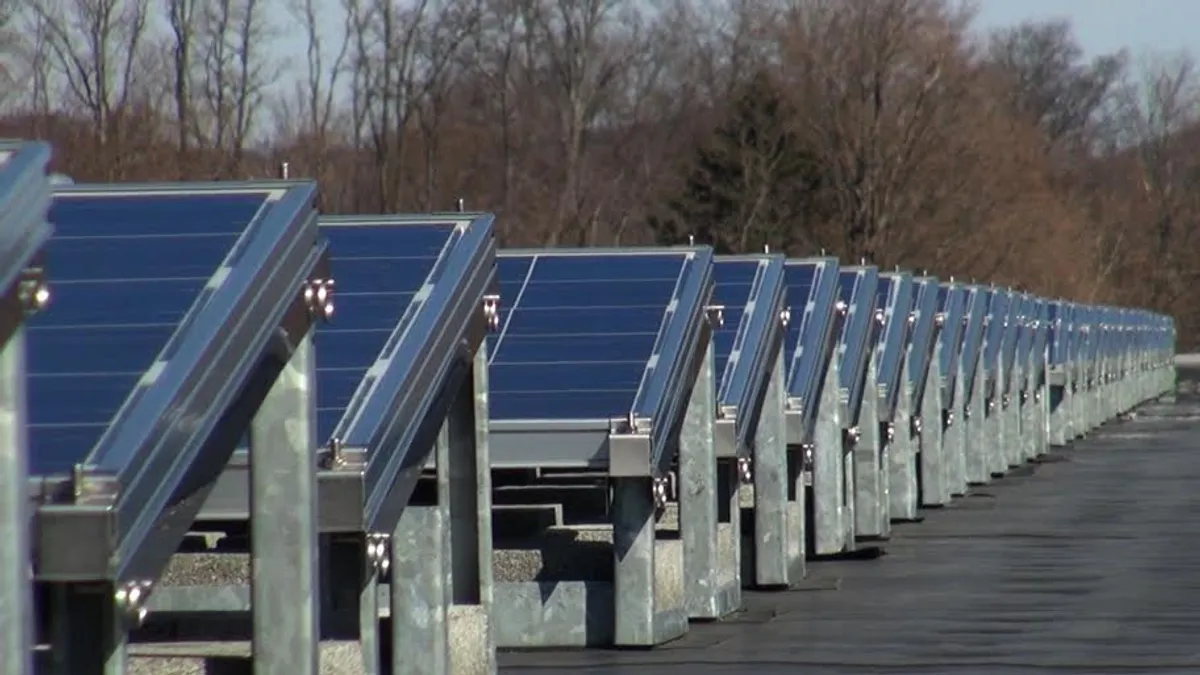Dive Brief:
- The Public Utilities Commission of Nevada on Wednesday unanimously voted against requests to delay implementation of controversial changes net metering remuneration rates and fixed fees for rooftop solar customers, the Associated Press reports.
- Rooftop solar customers and installers had requested the commission put a stay on the new rates and charges, which the commission retroactively applied to exsisting solar systems, as well as new ones. Ahead of consideration of the stay, Commissioner David Noble filed a draft order urging his colleagues to resist calls to delay implementation of the rates, which were set to go into effect on Jan. 1.
- PUC Chair Paul Thomsen said while the Commission was saddened by layoffs in the solar sector attributed to the reforms, they were trying to arrive at a decision to "create a path forward" for rooftop solar users that treated all ratepayers equitably.
Dive Insight:
The Nevada regulators' decision to implement a new net metering rates and fees for rooftop solar users has sparked an exodus from the state by major solar developers and calls from celebrities and presidential candidates to delay or reverse the ruling.
In December 2015, the Commission unanimously approved a new solar net metering rate that decreases the rate paid to rooftop solar customers for the power they export to the grid. The regulators also created a seperate rate class for all small commerical and residential net metering customers as well as a time-of-use pricing option. The new order would also include an increase in fixed charges alongside a decrease in the volumetric commodity charge designed to recoup costs from net metering customers.
The new rates will increase the monthly charge for NV Energy customers with rooftop solar from $12.75 to $17.90 per month in the first year of the phased increase, and they will eventually reach $38.51 at the end of five years. The NEM credit for present and future solar owners would fall from $0.11/kWh to $0.09/kWh in the first year and then, progressively, to $0.026/kWh in 2020.
In response, SolarCity and Sunrun announced that they would withdraw their operations from the state, with SolarCity announcing they would lay off 550 employees.
Nevada's solar market has grown quickly in recent years, setting off a fierce debate between the state's major utility NV Energy and solar advocates as the rapid expansion of solar installations maxed out the state's 235 MW net metering cap in 2015.
The state's Legislature directed utility regulators in May 2015 to develop a new solar tariff that satisfies both sides by the end of the year. NV Energy, the state's dominant electric utility, proposed to lower the remuneration rates for solar customers and increase fixed fees, arguing that net metered customers don't pay their fair share to maintain the grid.
Stakeholders had anticipated hitting the net metering cap by early 2016, despite warnings by The Alliance of Solar Choice (TASC) that the quick pace of solar PV installations would mean the cap would be hit earlier than the projected timeline.
The net metering cap was reached in August, which temporarily halted solar installations and prompted Vivint Solar's exit, the first of three. The PUC, which earlier had rejected solar advocates' pleas to extend the cap by saying it was under the legislature's purview, voted unanimously keep current rates in place through the end of the year before settling on the new net metering policy.
The AP reports that petitions were filed last week requesting extensive reconsideration of the new net metering rates. The next meeting of the Nevada PUC is slated for Jan. 25.













